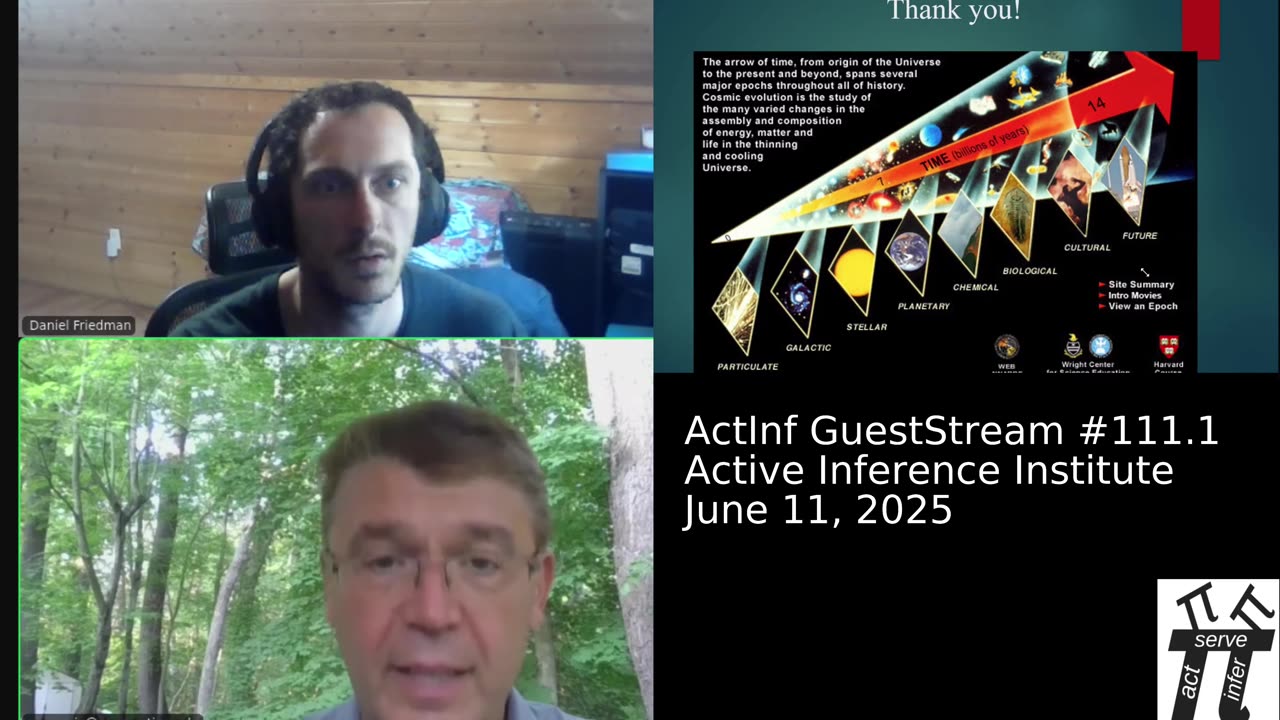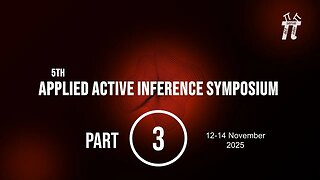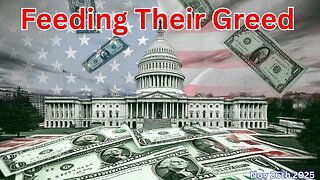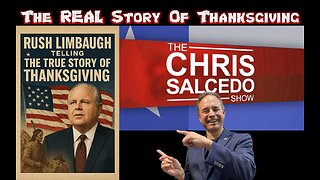Premium Only Content

ActInf GuestStream 111.1 ~ Modeling and Predicting Self-Organization in Dynamic Systems (G Georgiev)
Modeling and Predicting Self-Organization in Dynamic Systems out of Thermodynamic Equilibrium: Part 1: Attractor, Mechanism and Power Law Scaling
https://www.mdpi.com/2227-9717/12/12/2937
by Matthew Brouillet, and Georgi Yordanov Georgiev
Abstract:
Self-organization in complex systems is a process associated with reduced internal entropy and the emergence of structures that may enable the system to function more effectively and robustly in its environment and in a more competitive way with other states of the system or with other systems. This phenomenon typically occurs in the presence of energy gradients, facilitating energy transfer and entropy production. As a dynamic process, self-organization is best studied using dynamic measures and principles. The principles of minimizing unit action, entropy, and information while maximizing their total values are proposed as some of the dynamic variational principles guiding self-organization. The least action principle (LAP) is the proposed driver for self-organization; however, it cannot operate in isolation; it requires the mechanism of feedback loops with the rest of the system’s characteristics to drive the process. Average action efficiency (AAE) is introduced as a potential quantitative measure of self-organization, reflecting the system’s efficiency as the ratio of events to total action per unit of time. Positive feedback loops link AAE to other system characteristics, potentially explaining power–law relationships, quantity–AAE transitions, and exponential growth patterns observed in complex systems. To explore this framework, we apply it to agent-based simulations of ants navigating between two locations on a 2D grid. The principles align with observed self-organization dynamics, and the results and comparisons with real-world data appear to support the model. By analyzing AAE, this study seeks to address fundamental questions about the nature of self-organization and system organization, such as “Why and how do complex systems self-organize? What is organization and how organized is a system?”. We present AAE for the discussed simulation and whenever no external forces act on the system. Given so many specific cases in nature, the method will need to be adapted to reflect their specific interactions. These findings suggest that the proposed models offer a useful perspective for understanding and potentially improving the design of complex systems.
Active Inference Institute information:
Website: https://www.activeinference.institute/
Activities: https://activities.activeinference.institute/
Discord: https://discord.activeinference.institute/
Donate: http://donate.activeinference.institute/
YouTube: https://www.youtube.com/c/ActiveInference/
X: https://x.com/InferenceActive
Active Inference Livestreams: https://video.activeinference.institute/
-
 10:26:08
10:26:08
Active Inference Institute
10 days ago5th Applied Active Inference Symposium (Part 3, Nov 14, 2025) ~ LIVE
13 -
 LIVE
LIVE
Benny Johnson
47 minutes agoFBI Director Kash Patel Makes January 6th Pipe Bomber Announcement: Massive Breakthrough, Stay Tuned
5,463 watching -
 1:06:17
1:06:17
Graham Allen
2 hours agoFAKE NEWS Is Everywhere!! Are We Living In The Upside Down?!
92.8K367 -
 LIVE
LIVE
Wendy Bell Radio
5 hours agoFeeding Their Greed
7,092 watching -
 LIVE
LIVE
Badlands Media
7 hours agoBadlands Daily: November 26, 2025
3,070 watching -
 1:13:11
1:13:11
Chad Prather
16 hours agoGratitude That Grows in Hard Ground: A Thanksgiving Message for the Soul
55.8K36 -
 LIVE
LIVE
LFA TV
12 hours agoLIVE & BREAKING NEWS! | WEDNESDAY 11/26/25
3,287 watching -
 1:59:03
1:59:03
The Chris Salcedo Show
13 hours ago $7.55 earnedRemembering Rush On A Truly American Holiday
21.8K1 -
 36:24
36:24
Julie Green Ministries
4 hours agoLIVE WITH JULIE
80.2K178 -
 1:05:27
1:05:27
Crypto Power Hour
12 hours ago $7.60 earnedWhat You Need To Know About Gold Tokenization
58.2K7